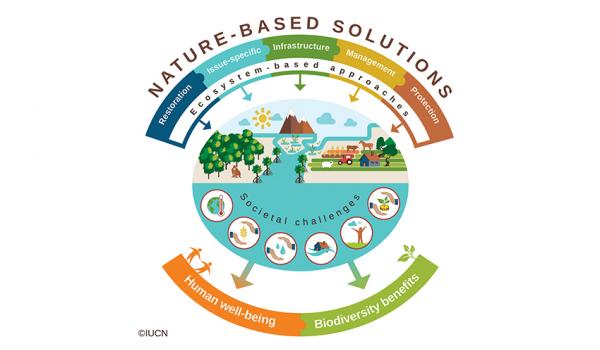With increasing risks to water sources due to environmental change, there is a need to adapt and build climate resilience over local and national scales. Over the past few decades, there has been a shift in management styles from top-down large scale schemes to holistic, bottom-up approaches as decision makers recognise the needs of communities that large-scale plans often fail to address. One interesting concept is the idea of nature-based solutions (NBS).
The 2018 UN World Water Development Report described NBS as solutions that are “inspired and supported by nature and use, or mimic, natural processes to contribute to the improved management of water”. This can involve conserving or rehabilitating natural ecosystems and/or enhancing or creating natural processes in modified or artificial ecosystems. NBS has gained popularity in recent years as development practitioners and decision makers have recognised the variety of benefits that can be made possible by harnessing the power of nature, including and not limited to: biodiversity, flood protection, food production, and reduced maintenance and management costs.
 |
| Figure 1. Diagram outlining factors of nature-based solutions (IUCN 2021) |
Launched during COP26, a report by WWF and AB InBev named Waterways to Resilience: Nature-based Solutions for adaptation in Africa. It’s a great report and I definitely recommend a read for an overview on NBS in Africa specifically. It offers some key findings on the potential for NBS to address water challenges which can guide decision makers, as well as highlighting the need for investment in similar schemes.
 |
| Figure 2. Cover of the report |
However, it is important to recognise that nature-based approaches aren’t a “green bullet” to all water management problems and come with their own limitations, such as competing with farming and housing for space. There have been cases where they were actually harmful to the environment and surrounding communities. In addition, a lot of these management schemes are new or under-monitored, thus difficult to assess whether they really were as successful as claimed. As such, it is recommended that decisions should ideally be based on site specific context for biological and physical system dynamics and guided by socio-economic, cultural and political considerations, proactively involving stakeholders and local knowledge (Acreman et al., 2021).
This blog will now focus on case studies of nature-based solutions for water management under the context of adapting to environmental change.
Comments
Post a Comment